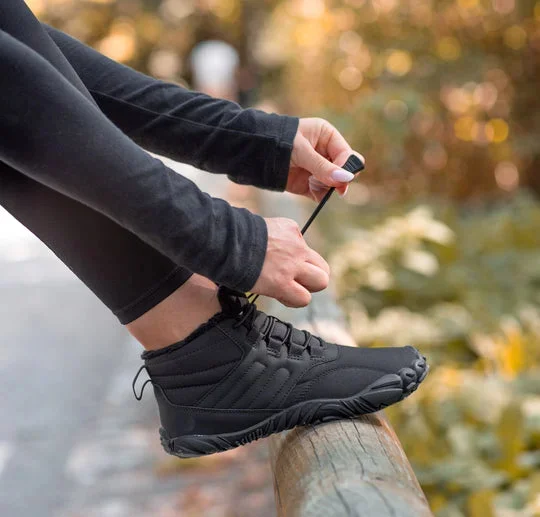Best Hiking Shoes

When it comes to hiking, having the right footwear can make all the difference between a enjoyable, successful trek and a disappointing, potentially hazardous one. The best hiking shoes are those that balance comfort, support, and protection, allowing hikers to tackle various terrains with confidence. In this article, we’ll delve into the world of hiking shoes, exploring the key features to look for, the different types available, and some of the top recommendations for hikers of all levels.
Understanding Your Needs
Before diving into the specifics of hiking shoes, it’s crucial to understand your hiking needs. This includes considering the type of hiking you’ll be doing most often, the terrain you’ll encounter, and the conditions you’ll face. For instance:
- Day Hiking: For short, one-day hikes on well-marked trails, you might prioritize lightweight shoes with good traction.
- Backpacking: Longer trips with heavy backpacks require more supportive and durable shoes that can handle the extra weight and varied terrain.
- Trail Running: If you’re looking to run on trails, you’ll want shoes that are lightweight, provide good cushioning, and have a more responsive feel.
Key Features of Good Hiking Shoes
Regardless of your specific hiking plans, there are several key features to look for in a pair of hiking shoes:
- Water Resistance: A waterproof or water-resistant membrane, such as Gore-Tex or eVent, can keep your feet dry in wet conditions.
- Traction: A good tread pattern is essential for grip on various surfaces. Deep lugs are better for mud and loose terrain, while shallower treads might suffice for harder, smoother trails.
- Ankle Support: Higher ankle collars provide more support, which is beneficial for rugged terrain or when carrying a heavy backpack.
- Breathability: While water resistance is important, so is the ability of the shoe to breathe and prevent the buildup of moisture inside the shoe.
- Comfort and Fit: Ensure the shoe fits well, with enough room for your toes to wiggle. Consider the comfort of the upper material and the cushioning in the midsole.
Types of Hiking Shoes
Hiking shoes can be broadly categorized into several types based on their intended use, design, and features:
- Hiking Boots: These are the most supportive and protective option, suitable for rugged terrain, long backpacking trips, or carrying heavy loads.
- Trail Running Shoes: Designed for running on trails, these shoes are lightweight, flexible, and offer good cushioning.
- Light Hiking Shoes/Shoes: A midpoint between hiking boots and trail runners, these are ideal for day hikes or lighter backpacking trips.
- Sandals and Water Shoes: For water crossings or very warm conditions, hiking sandals or water shoes can be a good choice, though they offer little protection.
Recommendations
Choosing the best hiking shoes can be overwhelming given the vast array of options available. Here are a few top recommendations across different categories:
- Merrell Moab 2 Mid Waterproof: A versatile, waterproof hiking boot that offers great support and traction.
- Salomon Quest 4D 3 GTX: Combines comfort, support, and a grippy sole, making it excellent for backpacking or long day hikes.
- Keen Targhee II: A lightweight, comfortable option that’s perfect for day hikes or easier trails.
- La Sportiva Raptor GTX: For more technical trails or running, this shoe provides excellent grip and a responsive feel.
Practical Tips for Buying Hiking Shoes
When you’re ready to purchase your hiking shoes, consider the following tips:
- Try Them On Later in the Day: Feet tend to swell throughout the day, so trying shoes on in the afternoon can give you a better fit.
- Wear the Same Type of Socks: The thickness and material of your socks can affect the fit, so wear what you plan to hike in.
- Walk Around: Make sure to walk around the store to ensure the shoes feel comfortable and don’t cause any hotspots.
Conclusion
Finding the best hiking shoes for your needs involves considering your hiking style, the terrain, and the conditions you’ll encounter. By understanding the key features to look for, the types of hiking shoes available, and considering top recommendations, you can make an informed decision. Remember, the right pair of shoes can elevate your hiking experience, providing comfort, support, and the confidence to tackle any trail.
What is the most important feature in hiking shoes for wet conditions?
+For wet conditions, a waterproof membrane such as Gore-Tex is crucial. It prevents water from entering the shoe while allowing moisture to escape, keeping your feet dry and comfortable.
How often should I replace my hiking shoes?
+The lifespan of hiking shoes depends on usage. As a general rule, if you’ve worn down the soles significantly, the upper materials are deteriorating, or you’ve noticed a decrease in performance and comfort, it’s time to consider replacing them. For heavy users, this could be every 6-12 months.
Can trail running shoes be used for hiking?
+Yes, trail running shoes can be used for hiking, especially for lighter, faster hikes on smoother trails. However, they may not offer the same level of support and protection as dedicated hiking shoes, especially on rugged terrain or with heavy backpacks.


